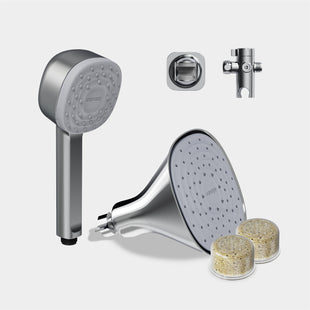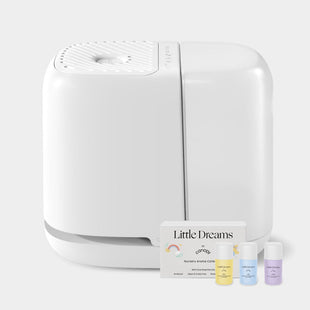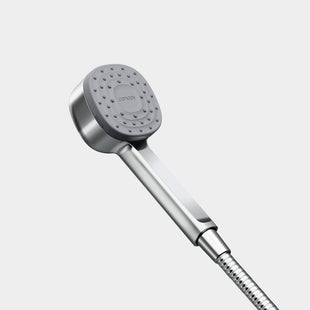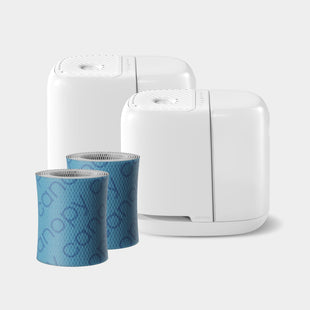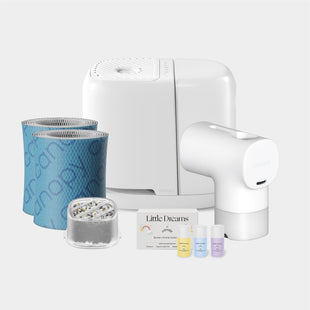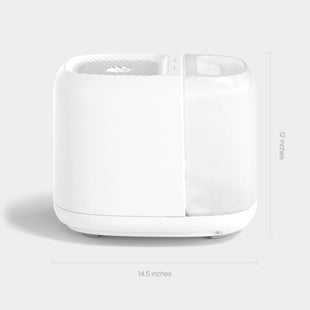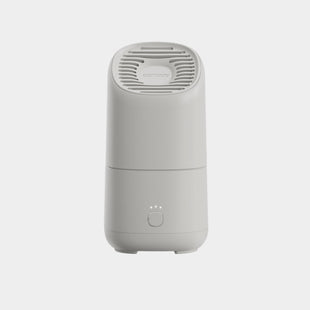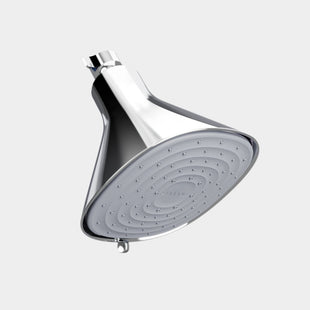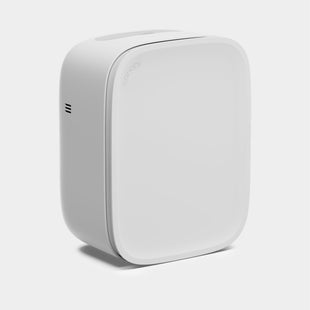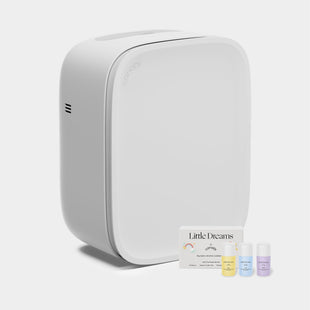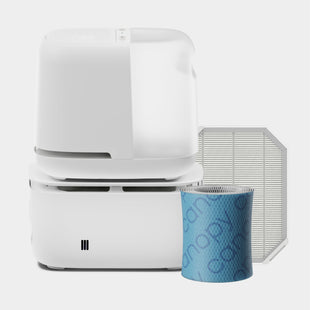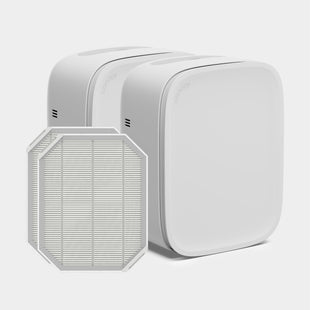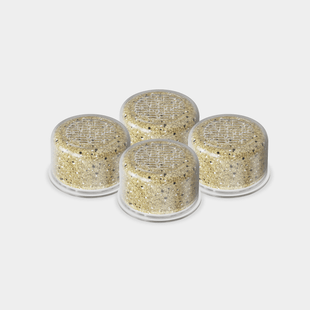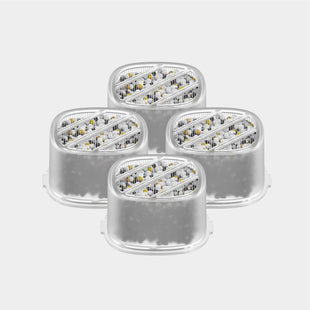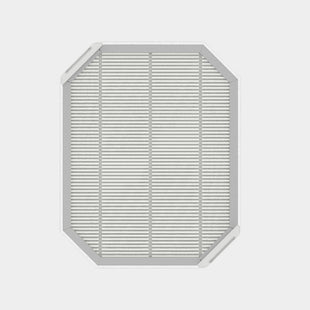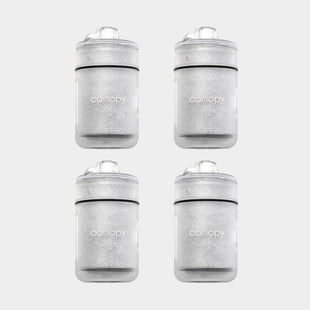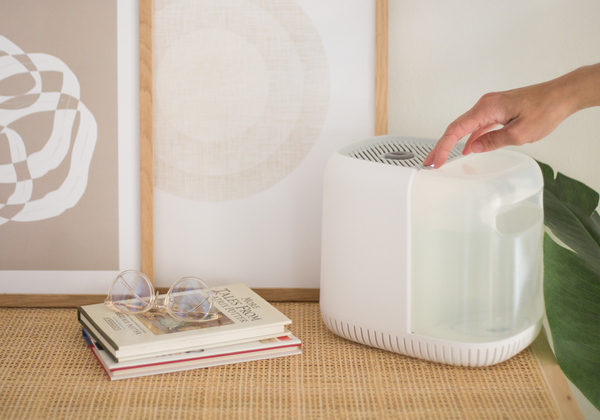This content has been reviewed and updated on June 18, 2024.
Humidifiers do exactly what you’d expect based on the name: These devices add moisture to your indoor environment to boost comfort and air quality. But with so many types to choose from, having a deeper understanding of how each one works can be beneficial. This knowledge will help you determine the ideal match for your unique needs.
We’ve gathered some must-know facts based on your top humidifier questions so you can feel confident about your purchase.
What Is a Humidifier?
A humidifier is a home appliance that increases the moisture content of the air, otherwise known as “humidity.” The device adds humidity by increasing the volume of moisture in a particular space.
There are two categories of humidifiers: cool mist humidifiers and warm mist humidifiers. While both cool mist and warm mist humidifiers increase moisture content in your indoor space, there are differences in how these devices operate.
Cool Mist Humidifiers
As their name suggests, cool mist humidifiers release cool, hydrated air into your space. Ultrasonic and evaporative humidifiers are categorized as cool mist humidifiers.
Warm Mist Humidifiers
Warm mist humidifiers, otherwise known as “vaporizers,” release warmed mist into your space. Like cool mist humidifiers, vaporizers allow you to achieve optimal humidity in your indoor environment for health benefits and comfort.
Even though the names are often used interchangeably, there are some key differences between humidifiers and vaporizers.
What Does a Humidifier Do?

Regardless of how it operates, a humidifier increases the relative humidity of an isolated space. Relative humidity (RH) is the actual amount of moisture in the air vs. the maximum amount of moisture the air can hold at a specific temperature. Higher temperatures can hold more moisture than lower temperatures (which is why heat is often accompanied by humidity in the summer months). And while too much humidity can present challenges, achieving optimal levels is important for a number of reasons.
The Benefits of Using a Humidifier
Regular use of a humidifier has several compelling benefits for your overall health and wellness. These advantages include (but are certainly not limited to):
- Rehydrating dry and dehydrated skin
- Delivering moisture to dry or cracked lips
- Improving the appearance of skin aging, including fine lines and wrinkles
- Reducing the symptoms of nasal congestion and sinus congestion
- Easing throat irritation
- Improving common cold symptoms
- Minimizing the rate of survival for airborne viruses
- Reducing congestion and breathing impairments in babies
- Rehydrating dry, dehydrated skin in babies
- Alleviating dry, flaky, and often itchy scalp
Plus, humidifiers are a non-medicated way to promote wellness at every stage of life. From pregnancy to early childhood and even the college years, humidifiers can suit people at any age, in nearly any environment.
Determining Your Indoor Humidity Levels
Many homes, offices, and other indoor spaces could benefit from added moisture. Measuring your indoor humidity levels is a simple way to decide if your space falls within optimal humidity ranges. If it doesn’t, you’ll know it’s time to invest in a humidifier.
How to Measure Humidity Levels
If you experience dry skin, nasal congestion, or itchy eyes, low humidity could be the culprit. To effectively determine whether this is the case, start by measuring the relative humidity in your space. The optimal humidity range for your home falls between 40% and 60%, depending on your personal preference—but how do you know whether you’re in that range?
A hygrometer is a tool that measures humidity levels in a space. These devices are useful to have even if you’re confident your humidity levels are too low since they can help you establish a baseline standard before you start running a humidifier.
But before you buy a hygrometer, check your thermostat. Most smart thermostats have a functional humidity reader, which can save you time and money. If your system doesn’t provide this information—or if you live in a building where you can’t control the thermostat—then start using the humidifier to alleviate your symptoms and create a usage routine that helps your environment feel more balanced.
How Humidifiers Work
How Does an Ultrasonic Humidifier Work?
An ultrasonic humidifier vibrates a metal diaphragm at sonic speed (hence “ultrasonic”) to create water droplets. These water droplets are then blown into the room with the device’s fan in the form of a cool mist.
How Does an Evaporative Humidifier Work?
An evaporative humidifier draws in air from the room into the device and fans the air through a moistened wick. The air is then fanned back into the room with newly contained water droplets. Canopy’s room humidifier collection is made with evaporative technology, meaning they work without releasing mist or vapor. Water passes through a UV light to block mold and bacteria, and a sensor can detect moisture levels to maintain optimal humidity around the clock.
How Does a Warm Mist Humidifier Work?
Warm mist humidifiers create heat to boil water in the reservoir and release mist into the air. The resulting vapor is fanned into the room, which slightly elevates the temperature of the space. Seeing the vapor can be satisfying, but a unit that produces heat can be dangerous around children and pets.
For a cooler, safer alternative to warm mist, turn to Canopy’s Portable Humidifier, which is well-suited for small spaces. Offices, hotel rooms, and other confined areas can benefit from the cool, fine mist produced by this travel-ready device. Allow the Portable Humidifier to create balanced moisture for optimal health and comfort wherever you go.
Are There Any Risks to Using a Humidifier?

As with most household appliances, humidifiers are safe if properly cared for. Always consult the user manual, which will provide relevant safety information and upkeep tips.
If not properly used and cleaned regularly, a humidifier tank can develop mold and bacteria that are subsequently released into the air. Canopy humidifiers can be used with regular tap water, but if your water has a high mineral content, the device may release “white dust” into the air which can trigger allergies or asthma attacks. Fortunately, these issues are avoidable with proper care.
Preventing Mold & Bacteria
Cleaning your humidifier ensures proper function and safety of your device since sitting water in any capacity can harbor bacteria if not properly cleaned.
Always refer to the user manual for precise directions for cleaning your humidifier. Generally, you should wipe down your humidifier after each use and deep clean the unit regularly. The Bedside Humidifier and Large Room Humidifier both have components that can go in the dishwasher, making deep cleaning a breeze.
Avoiding White Dust
“White dust” is the result of minerals, like magnesium or calcium, in unfiltered water being released into the air. If you identify small white specks or a thin layer of white residue near your humidifier, it may be releasing white dust. While nothing more than a nuisance for most people, white dust can affect people with asthma, severe allergies, or lung or sinus problems.
Fortunately, Canopy humidifiers are designed to filter impurities from the water before they’re released into the air. All you need to do is change the filter regularly, wash the components, and enjoy a fresher, more hydrated space.

